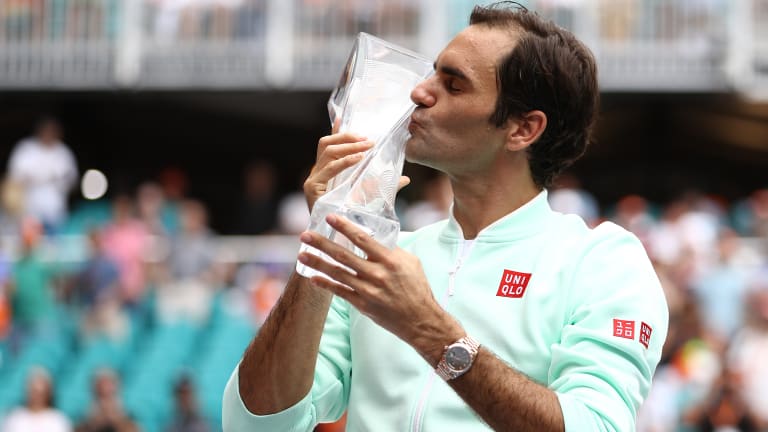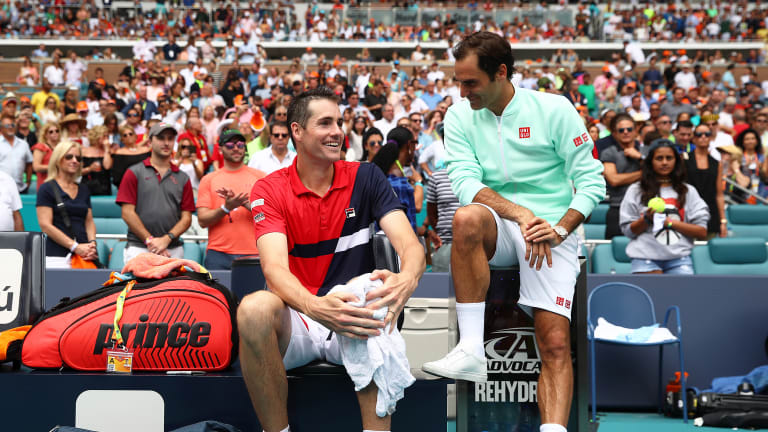Miami, USA
Federer 101: Roger’s latest title run in Miami was parts labor, love
By Mar 31, 2019Miami, USA
Emma vs. Emma, Kyrgios, Khachanov rematch: Miami, Day 4 Preview
By Mar 20, 2025Miami, USA
Mirra Andreeva coach Conchita Martinez keeps teen star grounded
By Mar 20, 2025Miami, USA
Mirra Andreeva created a blueprint for defeating Aryna Sabalenka. The response comes in Miami
By Mar 20, 2025Miami, USA
Naomi Osaka vs. Liudmila Samsonova: Where to Watch, Miami Open Preview, Betting Odds
By Mar 20, 2025Miami, USA
Nick Kyrgios earns first match win since 2022 at Miami Open
By Mar 19, 2025Miami, USA
Coco Gauff vs. Sofia Kenin: Where to Watch, Miami Open Preview, Betting Odds
By Mar 19, 2025Miami, USA
Joao Fonseca vs. Learner Tien: Where to Watch, Miami Open Preview, Betting Odds
By Mar 19, 2025Miami, USA
Victoria Mboko, 18, scores breakthrough Miami Open win
By Mar 19, 2025Miami, USA
Joao Fonseca, Coco Gauff and Naomi Osaka all in action: Miami, Day 3 Preview
By Mar 19, 2025Miami, USA
Federer 101: Roger’s latest title run in Miami was parts labor, love
The 37-year-old Swiss read the big man’s serves, he read his forehands, he read which way he was going to lean at the net.
Published Mar 31, 2019
Advertising

Federer 101: Roger’s latest title run in Miami was parts labor, love
© Getty Images
Advertising

Federer 101: Roger’s latest title run in Miami was parts labor, love
© Julian Finney/Getty Images